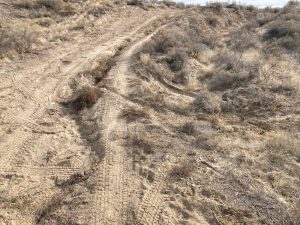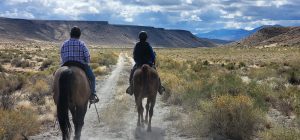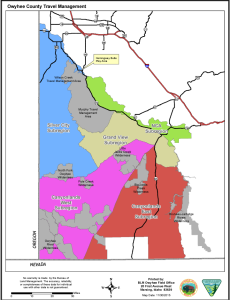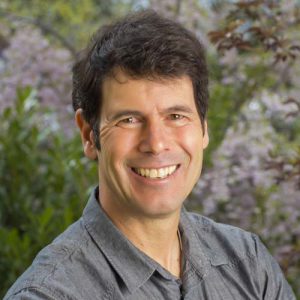Owyhee Travel Plans continue to veer off track
Congress designated the Snake River Birds of Prey National Conservation Area in 1993 to protect the largest and densest population of breeding birds of prey in the United States. According to the BLM, more than 700 pairs of prairie falcons, eagles, hawks, and owls nest on the cliffs and nearby areas. This area consists of spectacular canyons along 81 miles of the Snake River, sagebrush steppe plains, volcanic buttes, and sand washes. The area was renamed for Idaho’s famous raptor advocate and visionary conservationist Morley Nelson in 2009, well-recounted in the Feathers and Frontiers video. The Birds of Prey NCA Partnership has a great podcast series all about the NCA.The Birds of Prey NCA Partnership has a great podcast series all about the NCA.
The BLM is developing a much-needed Travel Management Plan for the 112,087-acre portion of the NCA south of the Snake River.
Balancing Eagles and Access
The NCA was designated specifically to provide for the conservation, protection, and enhancement of raptor populations and habitats. Access for people to admire and study raptors is an important component of the NCA but too much human disturbance can cause raptors to abandon their nests and fragment their habitat.
Unfortunately, the BLM is considering authorizing an excessive network of motorized jeep, UTV, OHV and dirt bike trails in the NCA at levels that could impair the conservation goals of the NCA.
The BLM is considering the “maximum motorized alternative” here as well which would prioritize 341 miles of trails for motorized recreational vehicles and dedicate less than one mile for hikers and equestrians.
ICL is asking wildlife advocates to tell the BLM to:
- select Alternative B which would secure key access routes for the public to view raptors without disturbing them
- maintain these access routes into the future
- protect habitat of prey species
- restore degraded habitat by rehabilitating user-created and redundant routes
Pattern of bad decisions
The BLM recently selected the “maximum motorized alternative” for the entirety of the 663,000-acre Canyonlands East Travel Planning Area and the 677,000-acre Canyonlands West Travel Planning Area, authorizing the vast majority of trails that have been pioneered across the landscape, including those within priority habitat for sage-grouse. This ecosystem is already in danger of unraveling from combined threats of invasive grasses, wildfires, and fragmentation. The maximum motorized alternatives unnecessarily exacerbate all these stressors, particularly given the known association between road densities, cheatgrass invasion, and human-caused wildfires (over 80% of wildfires are human-caused).
For Canyonlands East, the BLM designated 1,103 miles of routes as motorized and just 1 mile as a non-motorized trail. For Canyonlands West, the BLM designated 1,012 miles of routes as motorized and 4 miles as non-motorized trails.
The BLM appears poised to repeat the same mistakes here for the Snake River Birds of Prey National Conservation Area.


 Please tell the BLM that Alternative B of the NCA South Travel Management Plan does the best job of protecting raptors and securing public access for everyone who thrills at their flights in the canyon.
Please tell the BLM that Alternative B of the NCA South Travel Management Plan does the best job of protecting raptors and securing public access for everyone who thrills at their flights in the canyon.
The BLM is taking public comments through January 8, 2024.
The Silver City and Grand View Travel Management Plans will be out for public comment next. Please sign up here to be alerted when these next travel plans come out and speak up for your favorite hiking trails and wildlife areas.

